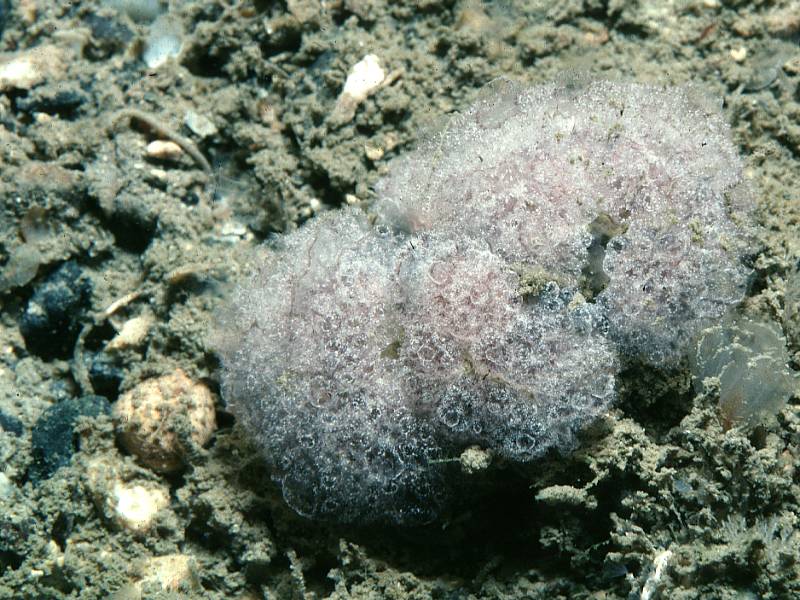| TUNICATA : Aplousobranchia : Holozoidae | SEA SQUIRTS |
Distaplia rosea della Valle, 1881
 |
| Distaplia rosea |
Description: Colonies are dome-shaped masses attached to small stones, shells, etc. They are of a characteristic rose-pink colour and sticky consistency. The zooids are completely embedded in test substance and the colony resembles a polyclinid. 20-50mm in diameter x l0mm thick.
Habitat: Typically found in sheltered muddy areas where there are shells or stones lying on the surface on which the colonies can grow. Found from 10m to at least 100m depth. Also frequent on wrecks.
Ecology: The tadpole larva is highly differentiated on release from the colony and swims freely for only a short period before settling. This could account for the localised distribution of this species, and the fact that it is often common when a locality is discovered.
Distribution: Probably occurs all round the British tsles, currently known from the southern North Sea (Norfolk), the English Channel, south-west Britain, the Irish Sea and south-west Scotland. Also from the west Coast of France and the Mediterranean.
Similar Species: The dome-shaped colonies resemble a polyclinid but the rose-pink colour and sticky consistency are quite characteristic. Internally the structure of the zooid with separate thorax and abdomen but no post-abdomen is distinctive.
Key Identification Features:
- Characteristic pink colour.
- Colony shape, domed with broad basal attachment.
Distribution Map from NBN: Distaplia rosea at National Biodiversity Network mapping facility, data for UK.
iNaturalist: Distaplia rosea at iNaturalist World Species Observations database.
GBIF data for Distaplia rosea
WoRMS: Distaplia rosea at World Register of Marine Species. Accepted name: Distaplia rosea Della Valle, 1881. AphiaID: 103609.
Classification: Biota; Animalia; Chordata; Tunicata; Ascidiacea; Aplousobranchia; Holozoidae; Distaplia
| Previous species | Next species |
| Picton, B.E. & Morrow, C.C. (2024). Distaplia rosea. della Valle, 1881. [In] Encyclopedia of Marine Life of Britain and Ireland. https://www2.habitas.org.uk/marbiop-ni/speciesaccounts.php?item=ZD170. Accessed on 2025-04-10 |